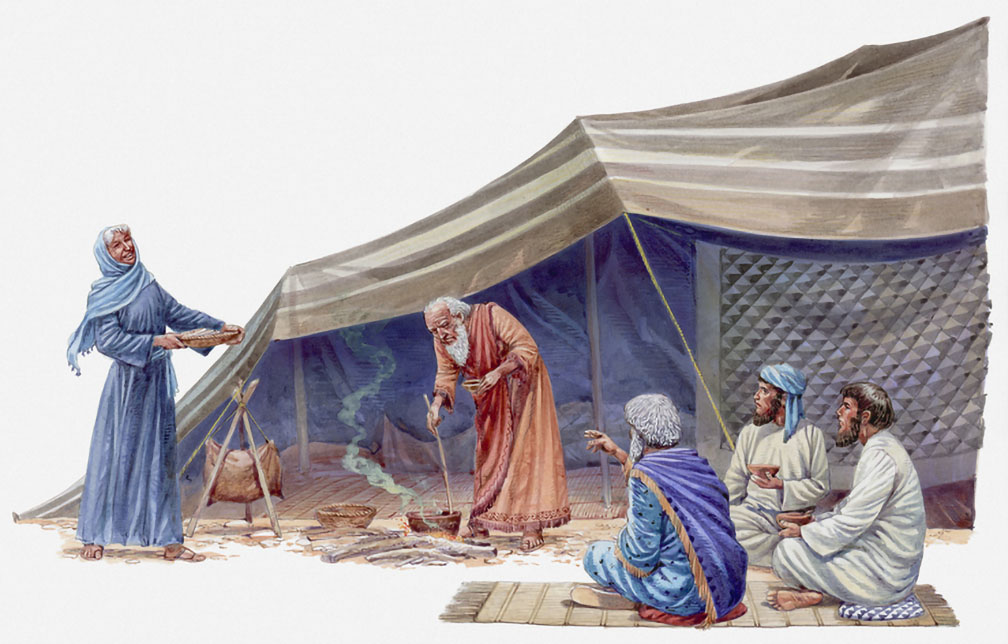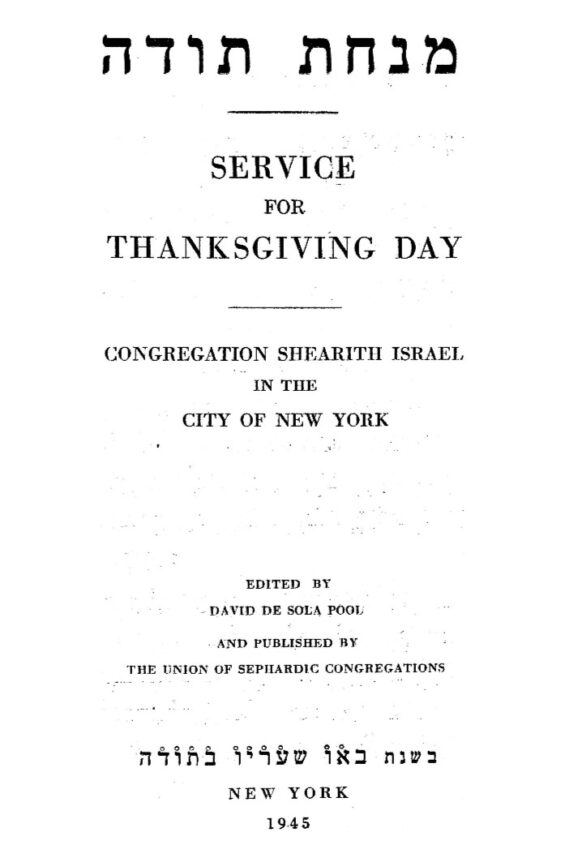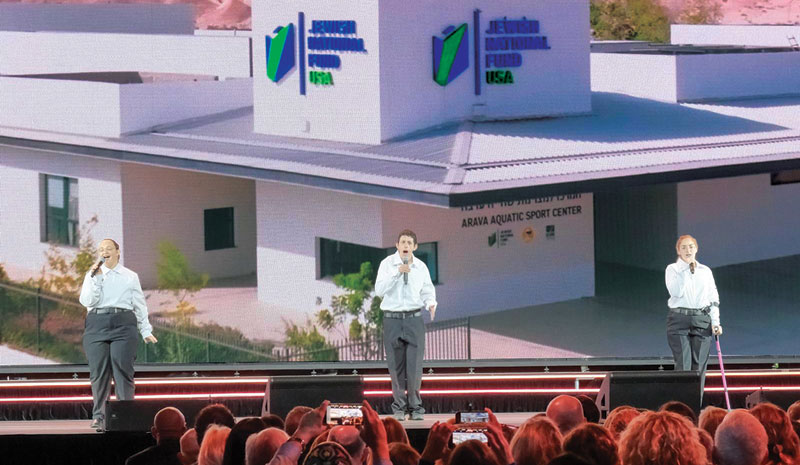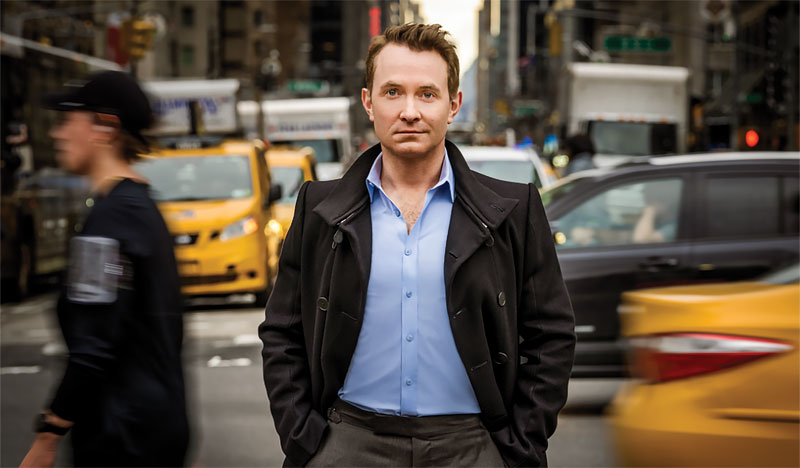On a dark spotlight-lit stage, a man in a long, black suit; yarmulke; and tallit slung over one shoulder fervently sings into a microphone, while a dance troupe in similar — but sexier — garb twirls behind him.
He’s not a cantor. He’s not a rabbi. He’s not even religious. He is Evgeni Valevich, a performer whose repertoire includes a program of Russian Jewish music in the genre called Estrada. Estrada may be a genre unknown to Westerners, but to Russians, the term is immediately recognizable.
This glitzy stage entertainment was popularized in the Soviet Union during the 1960s and 1970s, and a modernized and glamorized version is still highly popular in contemporary Russia. Its format is simple: a singer in glittering stage costume — sometimes backed up by a dance crew or a music ensemble, sometimes not — performs pop music numbers on a stage with a backdrop similar to the ones shown on the American TV show, “American Idol.”
The format of Jewish Estrada is identical to the Russian version: a lit-up stage, sparkling costumes, emotional music. The only difference is that the singers choose themes that reflect their Jewish identity. With his dress, Valevich plays up his Jewishness, although for others, the Jewish link can be weak.
At “A Night of Jewish Music and Humor” held earlier this month at the 2,500-seat Rossiya Concert Hall in Moscow, Joseph Kobzon — once recognized as the “People’s Artist of the U.S.S.R.” — performed a song in which the main verse ran: “L’chaim to all / Pour more (vodka) into the glass / Raise the glass higher.”
The keyword designating this song as “Jewish” is “l’chaim.” Otherwise, the song is Russian through and through.
For many Russian Jews, Judaism is still an exotic form of cultural expression. Russian, or even Soviet, culture is still closer to heart. That’s where artists like Kobzon come in.
“We started to go to these shows rather recently,” said Yevgenya Abramovna, a pensioner who has lived in Moscow her entire life.
She and her husband were attending “A Night of Jewish Music and Humor” in which Kobzon, Valevich and a half-dozen other Jewish artists performed.
This couple’s interest in Jewish culture was a new phenomenon that developed as they reached old age. The mere fact that singers sang in Yiddish or their songs touched on Jewish symbols was enough for them.
“We never knew anything about Jewish culture,” Abramovna said. “Where else can we go to see something like this?”
In the northern Russian city of Arkhangelsk, Valevich recently got a standing ovation from the few hundred Jews — a large majority of the Jewish Estrada fans are Jewish — who gathered to watch his performance. It wasn’t to thank him for braving a three-day train trip from Moscow. Instead, the ovation was for the same reason the audience snatched up his DVDs after the show: They were excited by his rather unusual and simple stage presentation of Jewish culture intertwined with a familiar entertainment genre.
Valevich’s performance is interesting because he boldly uses stereotypical Jewish images. Other Jewish Estrada artists make do with Jewish themes in their music and lyrics.
He not only sings about Jewish topics, he also dresses himself and his dance troupe in clichéd Jewish garb. For most of his performance, he resembles a shaved Chasidic Jew who has just emerged from shul — tallit casually draped over his shoulder.
Valevich goes even further by openly incorporating religious rituals into his performance. His number, “Shabbat,” takes the Shabbat candle-lighting ritual and prayer, backs it up with three female dancers twirling with candles in hand, adds violin music and turns it into what fans see as an emotionally moving stage number.
Although some criticize his use of Jewish imagery for propagating Jewish stereotypes, there’s a market for the type of entertainment he offers. While he’s only been in this genre for five years, Valevich, 29, and his troupe have toured extensively in the former Soviet Union, as well as in the United States.
It comes as no surprise that Jews living in Russia and in Russian immigrant communities in the United States enthusiastically receive him. For many Russian Jews, Valevich’s repertoire combines the two parts of their heritage that are difficult to combine: contemporary Russian pop music and Jewish themes.
“The very fact that this musical genre is in demand shows that Jewish culture is healthy,” said Evgeni Hazdan, a professional musician in St. Petersburg actively involved in Jewish folk music.
He believes that the diversity in Jewish musical tastes signifies that Russian Jews are experiencing Jewish culture according to their own varied tastes.
Although the only attendees at “A Night of Jewish Dance and Humor” younger than 40 seemed to be young children or young adults accompanying their aging parents, Valevich seems to think that there is a future for his type of show. The trick is to somehow involve the younger generation. He’s willing to try to drag them out and buy a ticket to one of his shows. His new techno number of “Hava Nagila” may just do the trick.
Who knows, maybe next time that nice Jewish boy taking his grandmother out to the concert will also take his Jewish girlfriend along.





















 More news and opinions than at a Shabbat dinner, right in your inbox.
More news and opinions than at a Shabbat dinner, right in your inbox.